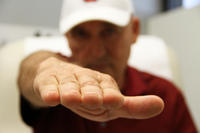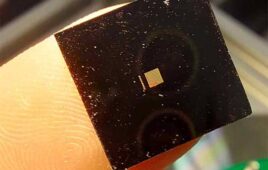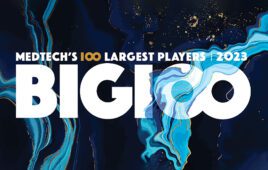
“This is brain surgery without cutting the skin,” said neurosurgeon Dr. Ali Rezai, principal investigator at Ohio State’s Wexner Medical Center and director of the Center for Neuromodulation at Ohio State’s Neurological Institute. “
The Ohio State University Wexner Medical Center is one of six locations nationally – and the only one in the Midwest – studying the safety and effectiveness of a promising new technology using MR-guided focused ultrasound to treat patients suffering from essential tremor as part of a multi-center FDA trial.
Nationwide, 50 patients whose tremors cannot be controlled with medication will be treated with the Exablate Neuro by INSIGHTEC, which uses Magnetic Resonance-guided focused ultrasound to treat tissue deep in the brain without incisions or radiation. The clinical trial is scheduled to conclude in December 2016.
Essential tremor is the most common movement disorder, affecting about 10 million people in the United States, and millions more worldwide, according to the International Essential Tremor Foundation. It’s a progressive and debilitating neurological condition that causes a rhythmic trembling of the hands, head, voice, legs or trunk.
Current treatment options include medications that aren’t always effective or deep brain stimulation (DBS), said Ohio State neurosurgeon Dr. Vibhor Krishna, who performed these surgeries when he was working in Toronto, Canada.
Last month, Stephen Palovchik, 71, of Delaware, Ohio, became the first patient treated with this technology at Ohio State’s Wexner Medical Center. His tremors started when he was in high school, and became progressively so bad that he had trouble putting a key into a door lock or writing on the blackboard. He struggled to sign checks, eat or brush his teeth.
During the four-hour surgery in the intraoperative MRI-surgical suite, Palovchik was awake and gave real-time feedback to the team of neurosurgeons, neuro-radiologists, neurologists and nurses. His feedback helped the team determine the exact brain cells to target with 1,024 beams of ultrasound focused on one spot deep in the brain that controls involuntary movements.
Palovchik is pleased with how well he can now sign checks, feed himself and brush his teeth without assistance, and calls the focused ultrasound technology “a gift from heaven.”
The technology is a new treatment option for older patients who are not good candidates for traditional DBS pacemaker surgery in which tiny electrodes are surgically implanted into the brain and connected to a small pacemaker-like device that has been implanted into the chest wall, Krishna said. The pacemaker delivers electrical signals that regulate abnormal brain activity, alleviating disabling symptoms, such as tremors, and restoring function.
Other centers involved in the research are Brigham and Women’s Hospital in Boston, Stanford Medical Center in Stanford, Calif., Swedish Medical Center in Seattle, University of Maryland Medical System in Baltimore and University of Virginia in Charlottesville, Va. This minimally invasive treatment is already approved for use in Europe. FDA approval in the United States is pending.
OSU Wexner Medical Center
www.osumc.edu




